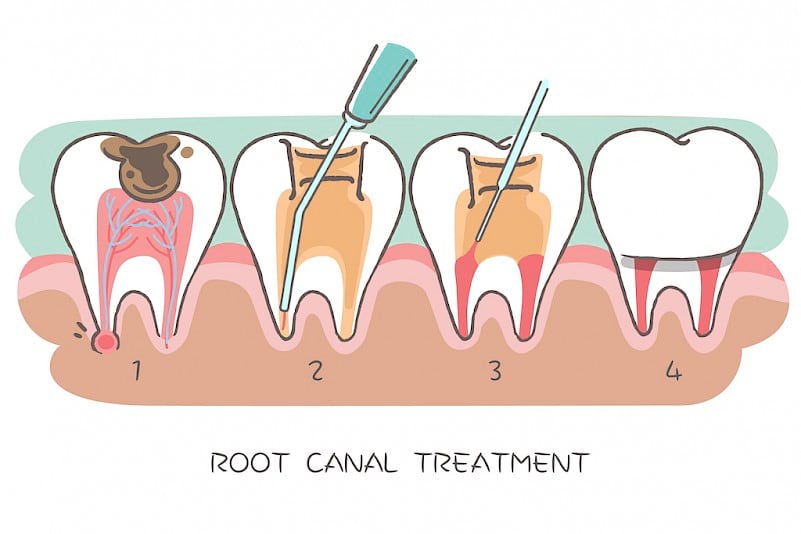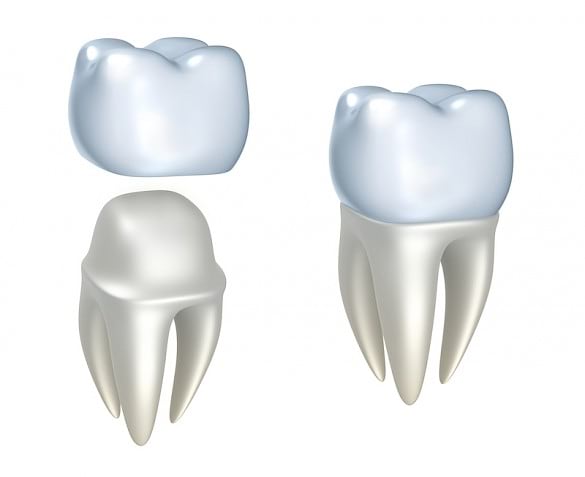What Happens During a Root Canal Treatment?

Root canals are performed to preserve a tooth that is infected or severely injured. People often view a root canal as being a lengthy or painful procedure, but this is rarely the case. A simple root canal can often be completed in under an hour. Even a more complicated one shouldn’t have you in the chair for more than an hour or two.
Your root canal should also be relatively pain-free. Anesthesia makes your dental treatment comfortable, and most people find that it doesn’t feel any worse than getting a filling. Finding out what happens during a root canal treatment erases the fear of the unknown that causes anxiety.
Root Canal Treatment
Start With an X-Ray and Exam

Most people come to the Tempe dentist with symptoms that indicate a root canal might be necessary. Lingering pain in a tooth after exposure to hot or cold foods is a big warning sign. An infected tooth might also cause you to develop a pimple, or abscess, in your gums. A sharp pain with biting or obvious crack are additional signs that your dentist will take seriously.
Dentists start root canals with an x-ray. This gives them a chance to get a good look at the shape and number of the tooth roots. We also use x-rays to look for signs of an infection in the surrounding bone and tissues of a tooth.
Use the Preferred Type of Pain Relief
Some teeth that need root canals have dead nerves that no longer cause pain. Your dentist will still likely use anesthesia to make sure that you feel completely comfortable during the procedure. Usually, a dentist uses a topical pain reliever on your gums to numb the area before using an injectable anesthetic. You’ll find this similar to the process and sensation that you feel during a tooth filling.
Occasionally, stronger forms of anesthesia are necessary. Sedatives are helpful for patients with extreme dental anxiety. People who have disabilities that make it hard to sit for long periods of time may also do better with sedation.
Clean Out the Tooth Roots

Once you are properly numb and relaxed, the main part of the procedure begins. The dentist will drill into the tooth to access the pulp and roots. Then, they use special instruments to clean out each root. You might feel a little pressure during this time, but shouldn’t be in pain.
Seal the Tooth
After the tooth is completely clean, your dentist has two options. For teeth with severe infections, they may choose to wait to permanently seal the tooth. Instead, they’ll place an antibiotic medication into the tooth and wait for the next appointment to make sure the infection clears. If they feel confident about the healing process, they can also seal the tooth on the same day.
Restore the Tooth With a Crown

After a root canal, most teeth are too weak to withstand chewing forces. You’ll typically need a dental crown to add strength. A crown is often placed in stages. You’ll likely go home with a temporary crown on your tooth while a permanent one is made by a dental lab. Once it is ready, you’ll come back to the office to have it placed. In some cases, you can have a crown made the same day, which helps you move forward with healing.
We only recommend root canals when we believe that it is your best option to save a tooth. If you have any concerns, then let us know. We can walk you through the procedure and let you know if we expect to run into any complications. Once your root canal recovery is complete, your tooth should be pain-free and function just like it did before as you speak and chew your food.